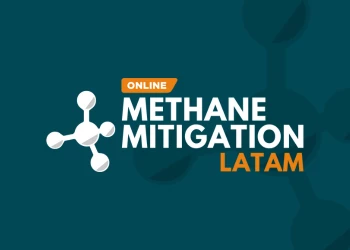Winning the War for Talent in Oil and Gas
Add bookmark
The oil and gas industry has long been struggling with a shortage of labor. The most recent US Labor Department report says that while the sector’s unemployment rate has increased by 0.8% to 3.1% in November, it’s still well below the long-term average.
The shale gas sector, in particular, has been hit hard and labor scarcity has been one of the biggest challenges holding the industry back from scaling up production in the face of soaring demand, according to the news report in Bloomberg.
Whether it’s quiet quitting, the great resignation, changing workforce demographics or the perceived “dirtiness” of the industry, the oil and gas sector has been struggling to recruit and retain the talent it needs.
At our recent Operational Excellence in Oil and Gas summit industry leaders discussed the search for talent and strategies for worker retention. Here’s what they said was the single most important employee retention tool:

Command and control leadership styles no longer apply in today’s job market. While individual motivations may vary – some may value the cash, others the job title and still others the purpose – most people want to be recognized, appreciated, and valued for what they contribute.
Sean Barnes says the industry hasn’t paid enough attention to the skills leaders need to create environments where workers can thrive.
“How to drill a hole in the ground is different from learning how to mount windmills and solar panels. But those are all hard skills that can be taught,” he explains. “I think what's most important is we start focusing on soft skills like leadership and effective communication and delegation - all things related to building a team in a culture. While the hard skills can be taught and learned, the soft skills are like superpowers today. That is where we need to focus.”
John Dale, Managing Partner at consultancy ALULA, agrees and talks about being a “learn-it-all” leader versus a “know-it-all” (a concept he attributes to Satya Nadella, CEO of Microsoft).
“Learn-it-all leaders,” he explains, ask questions, engage, and learn whereas “the know-it-all leader comes and shuts down conversation and shuts down innovation because they know it all.”
READ: 4 Ways Operational Excellence Helps Attract and Retain Employees

One size doesn’t fit all when it comes to motivation. People want to work and stay at an organization where they feel their needs and purpose are being met and they see long term opportunity to progress.
“Some people want to travel, some people don't. Some people want more training, some people don't. Some people want to mentor somebody else. Some people don't,” he explains. “You have to push the right buttons on the right people to give them the opportunities that get them excited.”
What is it that drives your people and gets them excited about coming into work? Workers want to be at companies that give them the opportunities that match their motivations.

Most people want to feel like their contributions and ideas matter and make a difference in the company.
Jose Pires says that successful organization create what he calls a “meritocracy of ideas with clear execution mechanisms accessible to all.”
What he means by that is creating the structures in an organization so that people feel that they can contribute ideas and execute those ideas to make a positive impact. He explains that you need to have formal mechanisms in place to achieve this.
“Let people decide how they're going to align their individual purpose with the purpose of this organization,” he explains. “Them give them some time […] to allow people to find them for themselves what the right alignment is for them. […] Let them decide what's best for them in that system. [...] Our job as leaders is to create an environment and a system for that to take place.”
What do you think? How can oil and gas companies improve worker retention? Let us know by leaving a comment.
Interested in Learning More About this Topic?
Join us at The Connected Worker Summit on March 28-30, 2023, and network with over 150 of your industry peers at the Norris Conference Center in Houston, TX., and learn how to engage workers, empower people, and drive continuous improvement across your operations with a Connected Worker strategy. Download the agenda to find out more.































